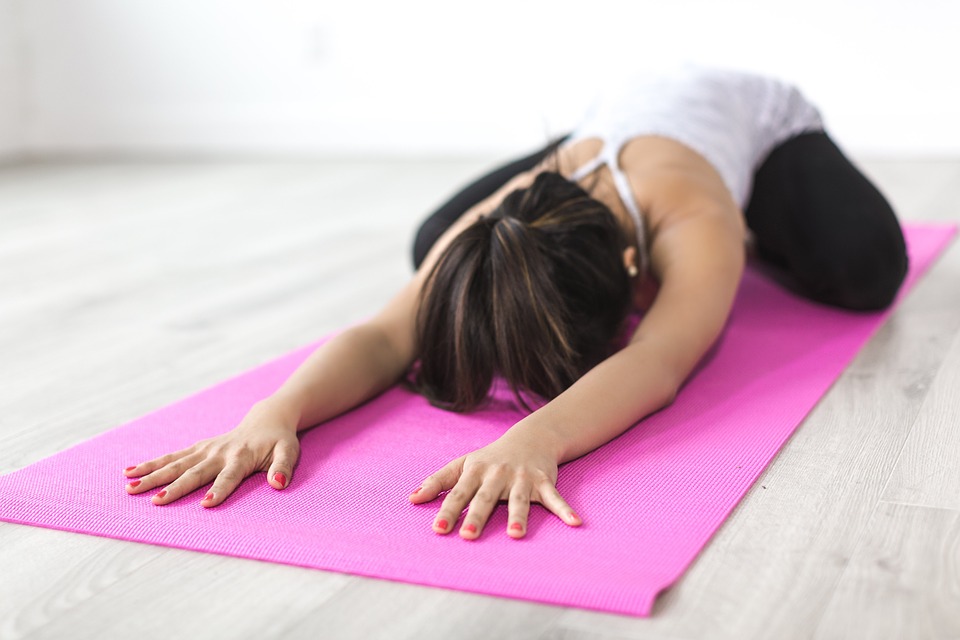Many of us are trying hard to work on our ‘me’ time, with tonnes of advice online singing the benefits of clearing time for meditation, mindfulness exercises and simple, quiet contemplation. But in the typical home, this can be easier said than done. Most amateur yogis have set about their sun salutations only to be interrupted by a phone ringing, or have found that particular poses leave them facing laundry that needs putting away, or a shelf that needs dusting. Distracting.
You get out the mindfulness colouring book and discover that the pencils to go with it are missing, or blunt. Your peaceful meditative music is interrupted at random by Spotify adverts because you don’t have a paid subscription. Suddenly, your resolve to spend fifteen minutes enjoying calm and quiet has gone out the window – it’s back to the sofa for a TV binge or a quick scroll through social media.
If you’re struggling to stick to gaps in your screen time after a busy day, or just need a little inspiration, clearing a spare bedroom or re-purposing a shed into a DIY wellness space might just be the answer. When room to manoeuvre is limited it can be difficult to get that sense of your own in-home oasis, but with some determination and a few choice accessories, you can give your chill out time the attention it deserves.
Deciding what the space is for
Let’s start by acknowledging that not everybody has enough space in their house to do yoga. At least, not without doing some serious furniture rearranging first. When you’re plotting out your quiet zone, think about what you most want to use it for, and what it’s possible to use it for.
With a whole spare room at your disposal, you might dedicate one corner to reading and colouring and leave the rest for yoga or gentle exercise. If you only have a corner to work with, make sure it will be effective for whatever you see yourself doing the most – if it’s for meditating, a clutter-free space with cushions and low lighting should be enough. If it’s for colouring and reading, a bright spot with a comfy chair and some soothing plant life could be the winning combination.
Mood-boosting decoration
It’s sometimes said that a tidy space equals a tidy mind, and this certainly rings true for most of us. Whether you’re working with an attic, a conservatory or one half of the spare room, keep your wellness zone as clear as you want your mind to be.
Ideally, you want your space to be somewhere in the house that people aren’t likely to keep walking through while you’re using it – which is why attics and even sheds can be ideal if you can give them a cosy makeover. Keeping decoration minimal will reduce the risk of distractions, but if your available spot is dark or dingy, adding ambient lighting is a must. You might want to try a Himalayan salt lamp, or keep things minimalist with a glowing mood light.
While ornaments and home accessories are liable to get in your way or gather dust, research has shown that plants are also a great addition to any area designed with mental wellness in mind, as they have proven mood-boosting properties.
If you aren’t very green fingered or your wellness space is a little too dark for plant life, the good news is that realistic artificial plants can have the same benefits for your wellbeing as the real deal. They lift your mood, and can decrease stress.
Look for leafy greenery and soft succulents rather than bright floral colours, and if you’re going for a faux option, be sure to pick something convincing that will help you to maintain a feeling of being connected with nature (without the need to feed and water it).
Embrace the senses
Good light and greenery are important, but you can give your wellness space more of an upmarket spa feel without too much effort at all. As well as making sure that there’s a place for anything you need to be stored – a box of colouring patterns and pens, for example – think about adding an aromatherapy element.
Whether you feel that certain scents elicit certain emotional responses or not, we can generally all agree that pleasant aromatherapy oils or scented candles are a pleasant thing to have around, and can help us to feel calm.
Incense may feel heavy in smaller spaces, but try inhaling fragrant oils warmed over a tealight, or lighting a few gently scented candles before you settle down to relax. Additional sensory stimuli can help you avoid distraction, and in the case of candles, watching a flickering flame can also be soothing in itself.
Lastly, whatever you do, make sure that your space feels ‘you’. If you prefer warm colours and earthy elements to modern minimalism, embrace that in your wellness zone. Avoiding clutter doesn’t have to mean keeping things spartan – you’ll find it easier to immerse yourself in a room or corner that feels homely and welcoming, and if that means creating a whole screen of leafy plants or piling scatter cushions into a cosy cocoon, go for it.











